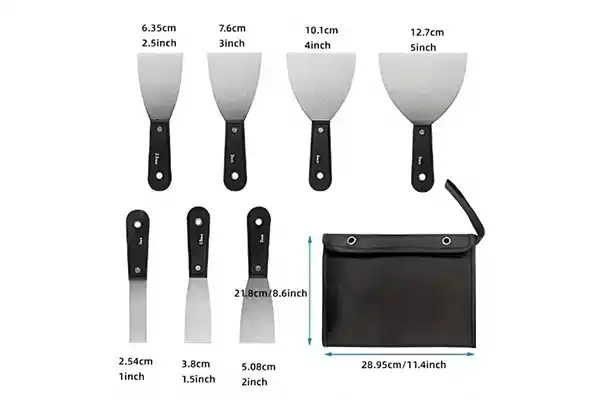When embarking on a home improvement project, choosing the right tools can make all the difference. Among the essential tools for tasks like patching holes, spreading joint compounds, or scraping away old paint, the putty knife stands out as a versatile and indispensable item. However, one question that often arises is, “What size putty knife do I need?” The answer depends largely on the specific job at hand and the material you’re working with.
Understanding Putty Knives
A putty knife, also known as a spackle knife, is a tool used primarily for applying or spreading materials like plaster, putty, or joint compound. They come in a variety of sizes, typically ranging from 1 inch to 6 inches, but can be found in both smaller and larger versions depending on the specific application. The blade of the putty knife is usually made from metal, although plastic versions are also available. The handle is ergonomically designed for comfort and control, which is essential when precision is needed.
Choosing the Right Size for the Job
The size of the putty knife you need depends on the task at hand. Here’s a guide to help you select the appropriate size:
1-inch to 2-inch Putty Knives: Small and Precise
For small, delicate jobs that require precision, a 1-inch to 2-inch putty knife is ideal. These small blades are perfect for filling nail holes, minor cracks, or narrow spaces. Their compact size makes them easy to control, allowing you to apply a small amount of material with precision.
3-inch to 4-inch Putty Knives: Versatile and Common
The 3-inch to 4-inch range is perhaps the most commonly used size of putty knives. They offer a good balance between precision and coverage. This size is excellent for patching larger holes in drywall, spreading joint compound over seams, or scraping away peeling paint. For many DIY enthusiasts, this size is the go-to option for most repair and finishing tasks.
5-inch to 6-inch Putty Knives: Wider Coverage
When you need to cover a larger area, a 5-inch to 6-inch putty knife is the tool of choice. These larger blades are ideal for spreading material over wide sections of drywall, such as when you are mudding a seam or smoothing out a large patch. They allow for a more even application, reducing the number of passes needed to achieve a smooth surface.
8-inch to 12-inch Putty Knives: Specialized Use
For specialized tasks like taping drywall seams or applying plaster over large surfaces, putty knives ranging from 8 inches to 12 inches are used. These wider blades can cover a significant area quickly, making them suitable for professional-grade work or extensive DIY projects. However, due to their size, they can be more challenging to handle and may require a more experienced hand to achieve a smooth, even finish.
Blade Material and Flexibility
Beyond size, the material and flexibility of the putty knife blade also play a crucial role in its performance. Metal blades are durable and provide a firm application, making them suitable for scraping or spreading thicker materials. Plastic blades, while less durable, are useful for softer applications, such as applying lighter compounds or working on delicate surfaces.
The flexibility of the blade is another consideration. A flexible blade is ideal for spreading materials over uneven surfaces, as it can contour to the shape of the wall. Rigid blades, on the other hand, are better suited for scraping or applying thicker materials where more force is needed.
Conclusion
Selecting the right size putty knife is essential for achieving a professional finish on your home improvement projects. While smaller knives offer precision and control, larger knives provide wider coverage and efficiency. Understanding the task at hand and the specific needs of your project will guide you in choosing the appropriate size. Whether you’re a seasoned professional or a weekend DIY warrior, having a range of putty knife sizes in your toolbox ensures you’re always prepared for any task that comes your way.
Post time: Aug-20-2024







